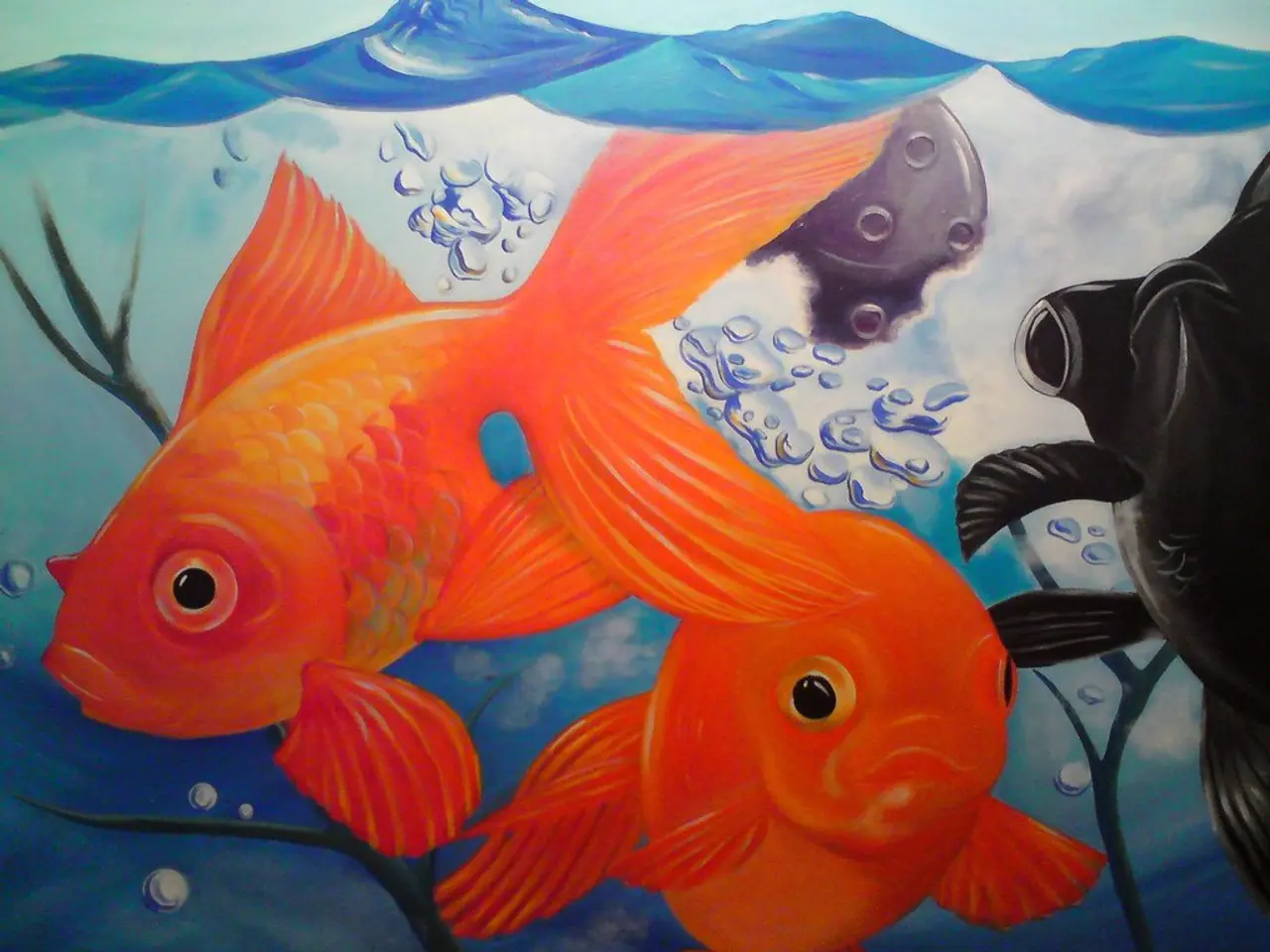In 2025, the Indian Council of Agricultural Research – Central Inland Fisheries Research Institute (ICAR-CIFRI) recognized and awarded forward-thinking fish farmers on National Fish Farmers Day.
Second Blue Revolution Boosts India's Fisheries Sector
In a significant stride towards modernising and expanding the fisheries sector, the Indian government and the ICAR-Central Inland Fisheries Research Institute (CIFRI) are spearheading the Second Blue Revolution. This ambitious initiative aims to enhance sustainable growth, infrastructure, and livelihoods in the sector.
On July 10, 2025, the National Fish Farmers Day 2025 was celebrated at ICAR-CIFRI, Barrackpore, and Bhubaneswar, marking a momentous occasion in the fisheries sector's journey. The event was graced by notable figures such as Dr. Sukanta Majumdar, Union Minister of State for Education and Development of the North Eastern Region, Government of India, Dr. Ravishankar C.N., Former Director and Vice-Chancellor of ICAR-CIFE, Mumbai, and Prof. Kallol Paul, Vice-Chancellor of Kalyani University, West Bengal, among others.
The gathering included 120 fish farmers, entrepreneurs, researchers, and representatives from NGOs, with 27 women in attendance. The day was filled with discussions, presentations, and the launch of 17 new fisheries clusters, totalling a value of Rs 105 crore.
Dr. B.K.Das, Director of ICAR-CIFRI, emphasised the institute's research in improving productivity in reservoirs and wetlands, river restoration, sustainable development goals (SDGs), and environmental flow requirements. He also encouraged award-winning farmers to share their experiences with fellow stakeholders to help uplift rural livelihoods.
The event also saw the signing of an MOU between Dr. Das and two wetlands of North 24 Parganas, West Bengal. This collaboration is expected to bolster the institute's research and development efforts in the region.
Dr. Majumdar urged fish farmers to adopt modern technologies developed by CIFRI and utilise schemes like PMMSY (Pradhan Mantri Matsya Sampada Yojana) to enhance fish production. He also released several publications and products of ICAR-CIFRI during the event.
The National Fish Farmers Day 2025 also marked the commemoration of the historic success of the induced breeding technique pioneered by Prof. Hiralal Chaudhury and his team in 1957, which sparked India's first Blue Revolution.
Under the Second Blue Revolution, key initiatives and strategies include the Pradhan Mantri Matsya Sampada Yojana (PMMSY), Fisheries Clusters, Technological Adoption, Fish Seed Production and Supply, Infrastructure Development, Research and Policy Support by ICAR-CIFRI, Data-Driven Planning, Financial and Credit Support, and regional cooperation against Illegal, Unreported, and Unregulated (IUU) fishing.
These efforts are aimed at sustainable resource use, enhancing productivity with modern technology, increasing resilience against climate change, improving livelihoods, and expanding domestic and export markets for fish and seafood. The sector, which contributes about 8% of global fish production, is moving towards a Second Blue Revolution with a target of 22 million tonnes of production.
The Indian fisheries sector produced a record 18.42 million tonnes in 2024-25, making it the second-largest fish producer globally. The sector, which contributes about 1.12% of India’s total GDP and supports nearly 30 million people across the value chain, is poised for significant growth under the Second Blue Revolution.
References:
- Second Blue Revolution
- Pradhan Mantri Matsya Sampada Yojana (PMMSY)
- Fisheries and Aquaculture Infrastructure Development Fund (FIDF)
- State of India's Fish
- India's Fisheries Sector
- The Second Blue Revolution, initiated by the Indian government and ICAR-CIFRI, focuses on science and technology advancements in the fisheries sector.
- Health-and-wellness benefits are foreseeable as part of the Second Blue Revolution's commitment to sustainable growth and improved livelihoods.
- Fitness-and-exercise routines can be integrated with outdoor activities like fishing, an emerging aspect of the lifestyle changes promoted by the Second Blue Revolution.
- Environmental-science plays a critical role in the Second Blue Revolution, ensuring sustainable resource use and addressing environmental flow requirements.
- Investing in the fisheries sector, driven by initiatives like PMMSY, could provide attractive returns as part of one's overall personal-finance strategy.
- The Second Blue Revolution's space-and-astronomy angle lies in using satellite imagery for data-driven planning and managing resources in the fisheries sector.
- Home-and-garden solutions can be developed to address water resource management challenges that are crucial for the growth of the fisheries sector within the Second Blue Revolution.
- Business opportunities abound in technology development for the fisheries sector, a key area of focus during the Second Blue Revolution.
- Education-and-self-development in the fisheries sector is encouraged through events like the National Fish Farmers Day, which showcases advancements in food-and-drink production methods, travel experiences in rural areas, and entertainment in the form of presentations and discussions.




